Guess Which Italian Master Inspired Kurun Warun
Kurun Warun was working as a tiler and Aboriginal dancer when he saw a painting in the Gallery of New South Wales by an Italian master. The light and mood of the work captured his imagination and he kept going back to look at it. An artist friend gave him a canvas and from then on his career as an artist took off. In this interview, he talks about the journey into art, his studio and what he loves to paint.
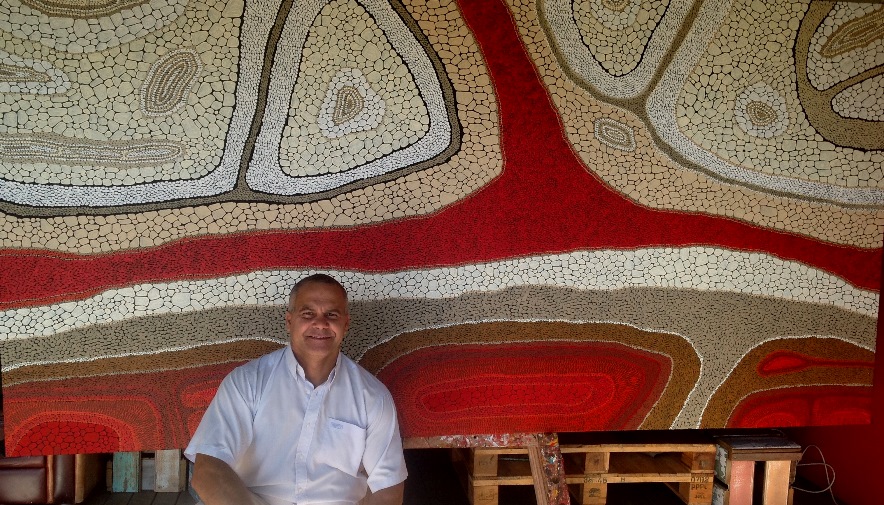
Do you remember when you first started to paint?
Yes, I painted when I was three years old. I’ve always had something to do with art because my Mum is an artist. I’ve always grown up with art. As a child, I’d painted landscapes.
For 25 years, I went away from the art. In 1999 I did my first painting as an adult. I got it rolled up and hung. An artist I knew asked me to come to Sydney to play didg for her and be the MC for an exhibition. She gave me a canvas. It was the size of a door and I started painting again. I had spent years dancing and didging. That was my job. My art seemed to be just waiting when the time to be right again. It is what I do now.
At the very start of painting again I drove to Sydney with some paintings in my car. I went to a gallery and I said, “What do you think? Are they any good?” They said yes. I said, “You reckon you can sell them?” I thought they’d sell for $500. The second painting I’d done sold for nearly $2,000. I had never done Aboriginal art before, ever.
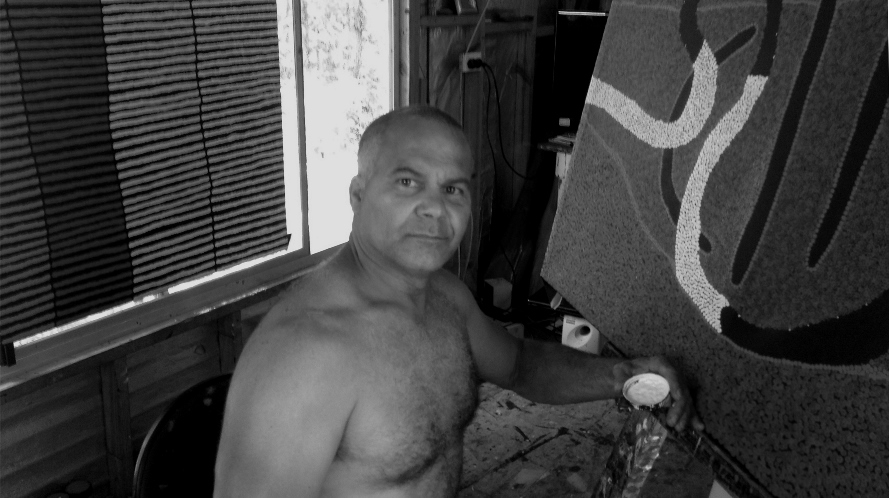
What was your learning process?
I was self-taught. Everything I do is me. That’s what’s so different. I don’t paint traditional stories. If you do that you’ve got to deal with tribal things. I’m very independent. No-one can tell me what to do. I won’t be told. I’ll pull my head in for the Creator, but that’s about it.
What you feel like when you paint?
Sometimes I’m running on adrenaline. I’m pumping. I can feel it, as it’s happening. Before the painting is finished I can see it I can feel it. It’s just so amazing. Some people paint about the spirits and this and that and the other. Not me, that’s not my gig. I stay away from everything about spirituality. People are very interested, they don’t have a clue about it. You’ve got to be really, really careful about what you do and what you talk about. My art is about me. It’s my life when I’m painting and sometimes I’ll have an idea of what I’m gonna paint and it ends up totally different. As I paint it, I feel its flow, everything. Balance and colour. I’ve done one as big as a wall.
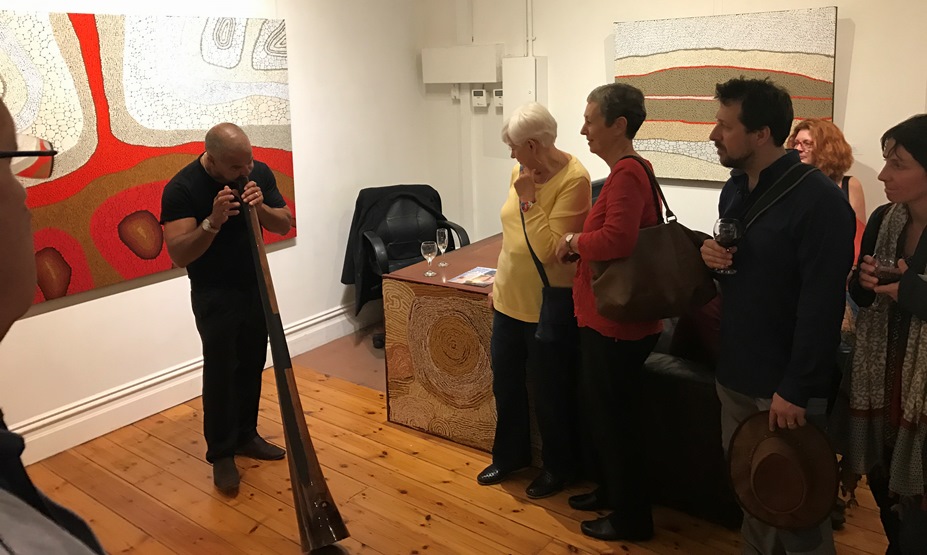
Is painting a solo activity or do you paint with others?
I usually paint by myself except for my family. They’re the only ones. My wife and my children, that’s it. Sometimes friends will come around, but it’s not the same. It’s a solo thing, just me and my family. I feel a lot better when I’m painting.
I sometimes paint in a gallery. I’m prepared for that and I adjust. When I’m painting at home, I’m in my space. I am in control of who I’ll let come into that space. It’s just a funny thing, but it’s your prerogative at home. Who I deal with and who I speak to. I’ve got no time for stupidity, stupid rubbish. I’ve done enough of that.
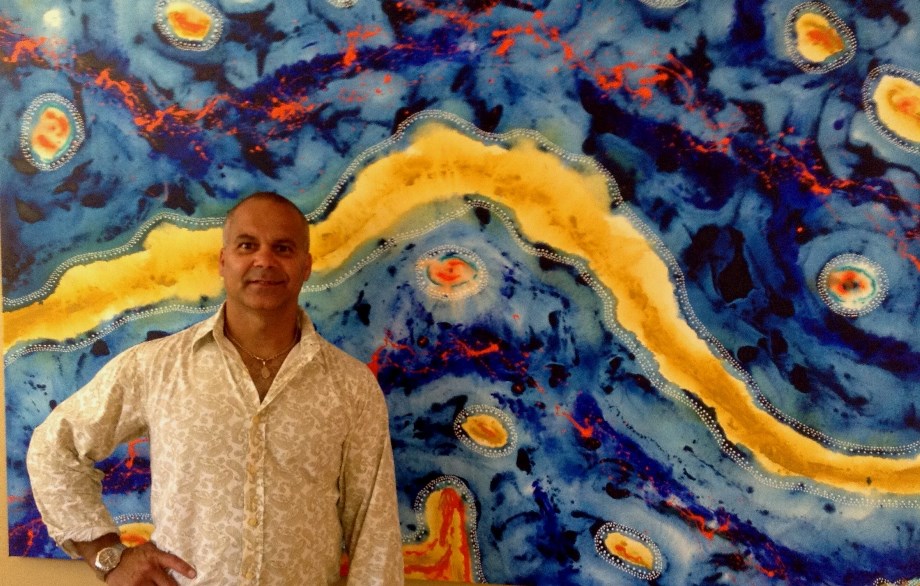
Can you describe your studio?
My house is an old shed. I used to paint in the lounge until my first boy came along then he started getting older and crawling around. I had to get out of the house then. I built a studio. It’s about five metres long and about three metres wide. It’s got big glass windows all around, glass on every side. You can look straight out to the mountain just outside Noosa.
I built a new bedroom onto the shed. The bedroom is eight metres long. I wanted two queen size beds side by side for our bed. The kids sleep next with us and there’s five of us. Two queen size beds. Sleep is very important. We could all be together.
We like to keep the babies close. I know where they are. My studio is straight off of my bedroom. I’d be out there until 2 o’clock in the morning. Then its “Oh, I better go to bed.” I just get so caught up in the art, in the painting. In the flow of it. I’ve got to stop for food. Sometimes I get sore shoulders.
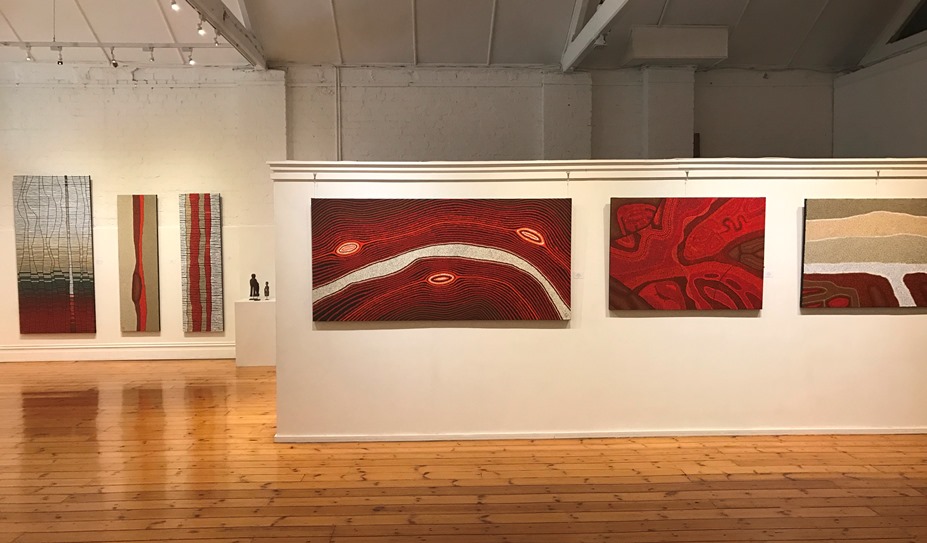
What other art has touched your heart?
The first thing that’s ever moved me with art was at the National Gallery in Sydney. It was a painting about 2 metres x 1 metre. It was by an Italian artist Giuseppe Pennasilico called The End of a Dream. There was a woman and she was sitting on the side of a bed. There’s a figure in the background. The painting captured all this wonderful light. I’d look at that and it moved me. I kept coming back to it.
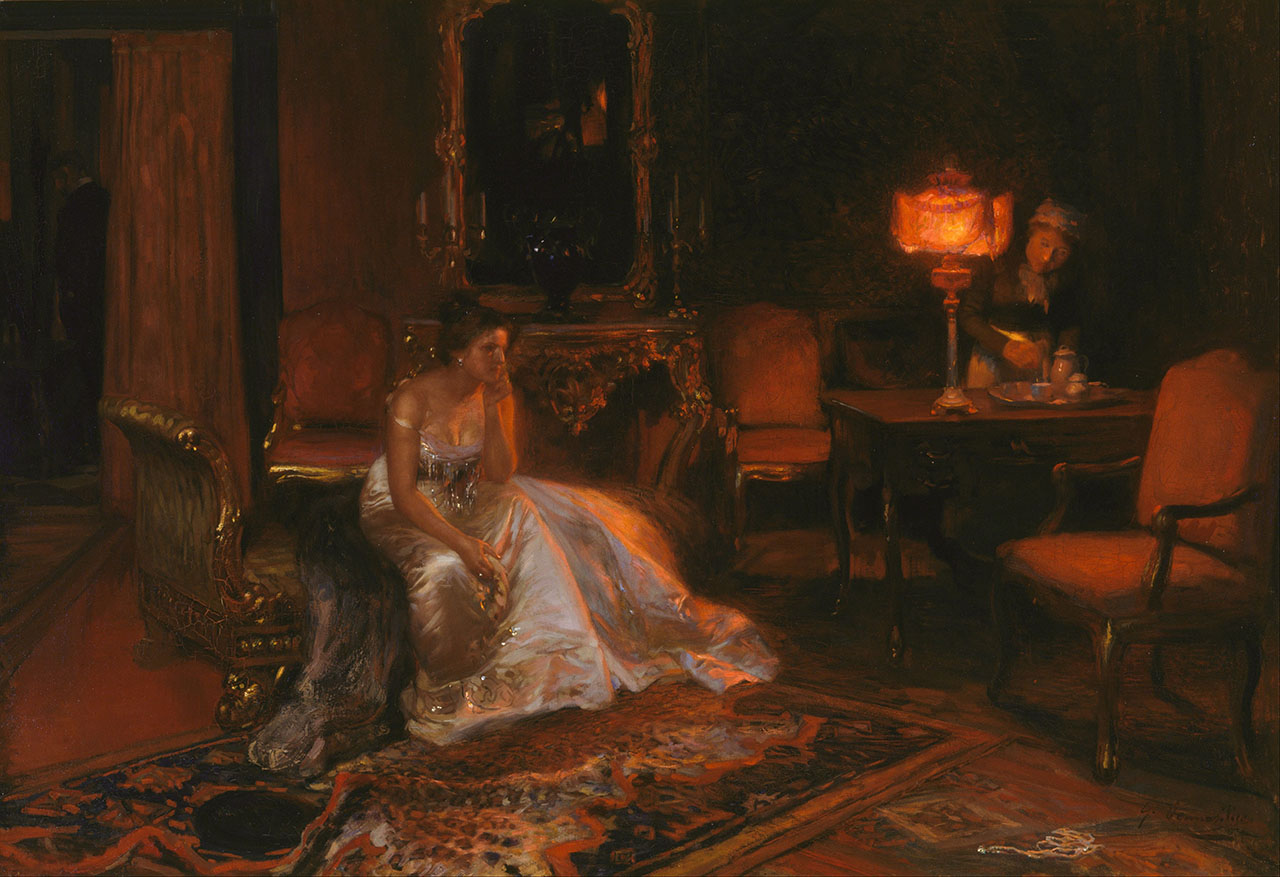
There were other works of the Queen of Sheba, Solomon and the big cats. I’d just keep going back to this one. I’d never ever felt that, ever before. That’s when the art started to live in me, it was just laying dormant. That painting really spoke to me. I haven’t seen it since. That was twenty years ago. I’d love to see it again. Now I’ve had my art showing in that same gallery.
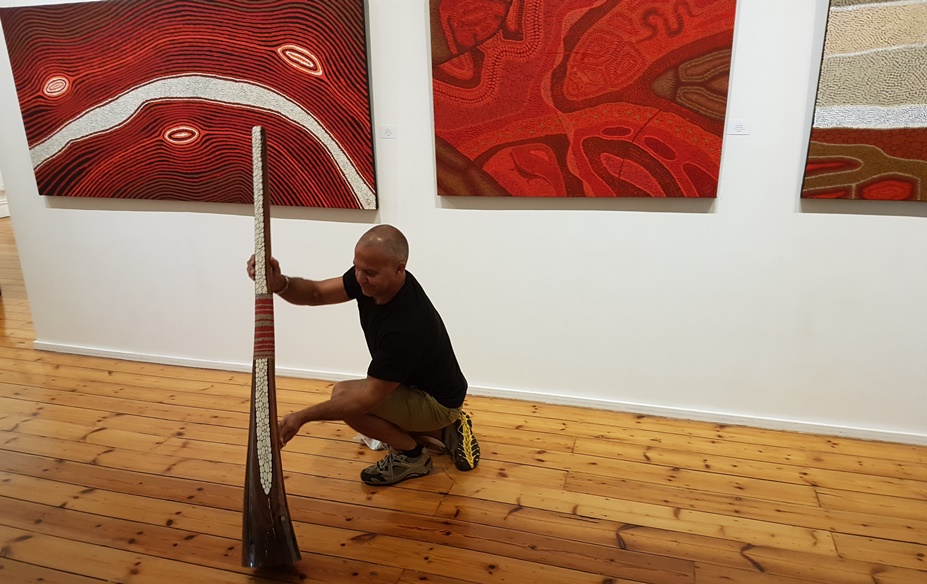
Can you talk a little about the didgeridoo?
In 1997 I heard Steven Bonner play. I thought it was the most amazing sound in the world. I thought I’m going to learn. I taught myself. I drove my wife insane. I used the vacuum cleaner pipe to learn on. I taught myself the breathing and everything. She said, “You drive me insane.” I said, “One day, this will pay our bills.” I was a tiler at that time. I get tunnel vision. When I see where I wanna go, I just do it.
Who are the artists you admire?
I’ve met Gloria Petyarre. She is just beautiful. Gloria and some other artists were up our way for an exhibition. We danced for them. Gloria kept saying, “I know you, I know you.” I said, “Nah, you don’t know me.” She’s insisted, “I know you.” Anyway, we’re got chatting. Years before, in Sydney, I saw all these Aboriginal women who looked like fish out of water and lost. I said, “Come with me.” We went and got some food. I didn’t realise they were the artist women I looked up to. Suddenly all those years later there she is saying, “Oh that was you.” I know lots of other artists, she’s the most well known.

You taught yourself to play didge. Help me understand something about the didge. What does it mean? What does it feel like?
Yidaki. There’s three tribes where women definitely won’t play them. People say that women shouldn’t play them, wrong, wrong, wrong. Some groups do. People who say that women shouldn’t play them have never played them traditionally. In some tribes it’s only young men who play because that’s traditional, these fellas are custodians.
The breathing is the easy part. The rhythm is hard, very difficult to get certain rhythms because you’ve got to beat, double-beat. The rhythm depends on your diaphragm and what you’re saying. When you speak a language and a natural rhythm comes out.
Is it like jazz, is it something that people improvise?
There are rhythms for dancers. For a certain dance, there’s a certain rhythm. People improvise too. The proper stuff is all about spoken language, the dance and the rhythm. This is how it’s done. The beats, everything, the timing, it’s all for the dance.
When you hear didge music, what’s the feeling that comes over you?
It makes me want to dance and I just love it. That was my job. Problem is when you organise these fellas’ dance troupes, you get a headache in dealing with these fellas because they go walkabout.
What is it that you’d like to say to people who see your work. If you had a message what would it be?
I want them to know the story behind the work. I want to just share, share and share everything. Some things people are not privy to know, but with the majority of stuff is fine to share. The more people who understand and know it, the easier it is, the better.
